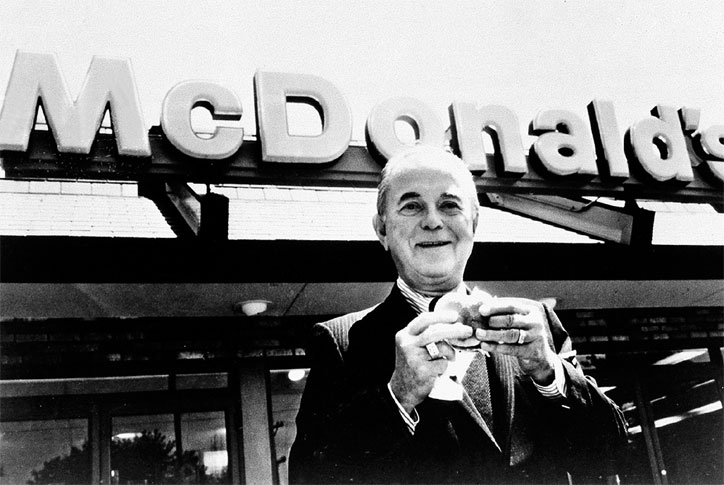By FnF Desk | PUBLISHED: 19, Feb 2021, 10:31 am IST | UPDATED: 19, Feb 2021, 10:49 am IST

McDonald’s, in full McDonald’s Corporation, American fast-food chain that is one of the largest in the world, known for its hamburgers. Its headquarters are in Oak Brook, Illinois.
The first McDonald’s restaurant was started in 1948 by brothers Maurice (“Mac”) and Richard McDonald in San Bernardino, California. They bought appliances for their small hamburger restaurant from salesman Ray Kroc, who was intrigued by their need for eight malt and shake mixers. When Kroc visited the brothers in 1954 to see how a small shop could sell so many milk shakes, he discovered a simple, efficient format that permitted the brothers to produce huge quantities of food at low prices. A basic hamburger cost 15 cents, about half the price charged by competing restaurants. The self-service counter eliminated the need for waiters and waitresses; customers received their food quickly because hamburgers were cooked ahead of time, wrapped, and warmed under heat lamps.
Seeing great promise in their restaurant concept, Kroc offered to begin a franchise program for the McDonald brothers. On April 15, 1955, he opened the first McDonald’s franchise in Des Plaines, Illinois, and in the same year launched the McDonald’s Corporation, eventually buying out the McDonald brothers in 1961. The number of McDonald’s outlets would top 1,000 before the end of the decade. Boosted by steady growth, the company’s stock began trading publicly in 1965.
The public face of McDonald’s was created in 1963 with the introduction of a clown named Ronald McDonald, while the double-arch “m” symbol became McDonald’s most enduring logo in 1962, lasting far longer than the tall yellow arches that had once dominated the earlier restaurant rooftops. Other products and symbols would define the McDonald’s brand, including the Big Mac (1968), the Egg McMuffin (1973), Happy Meals (1979), and Chicken McNuggets (1983).
The chain continued to expand domestically and internationally, extending to Canada in 1967, reaching a total of 10,000 restaurants by 1988, and operating more than 35,000 outlets in more than 100 countries in the early 21st century. Growth was so swift in the 1990s that it was said a new McDonald’s opened somewhere in the world every five hours. It effectively became the most popular family restaurant, emphasizing affordable food, fun, and flavours that appealed to children and adults alike.
The success of McDonald’s brought increased criticism, much of which concerned its perceived association with a global increase in obesity. McDonald’s responded by adding healthy items to its menu, and in 2017 it released McVegan, a plant-based hamburger, which was only available in certain markets. Two years later it began testing another vegan hamburger, the P.L.T. During this time McDonald’s also eliminated supersized portions, and its U.S. and Canadian restaurants stopped using trans-fat oil in a number of items. Such measures, however, did little to stem health concerns. In addition, as one of the world’s largest private employers, McDonald’s faced numerous calls to increase wages. The term McJob was added to the Merriam-Webster dictionary to mean “low-paying job.”
In the late 20th century, McDonald’s moved beyond the hamburger business by acquiring Chipotle Mexican Grill (1998), Donatos Pizza (1999), and Boston Market (2000) in the United States, and in the United Kingdom McDonald’s purchased Aroma Cafe (1999) and an interest in Pret A Manger (2001), a sandwich restaurant chain. However, by late 2008 McDonald’s no longer owned or had a stake in any of those companies, instead concentrating on its own brand.
McDonald’s was active in charitable work. In 1974 it joined Philadelphia Eagles football player Fred Hill, whose daughter had been diagnosed with leukemia, in founding the Ronald McDonald House in Philadelphia. The residence allowed families to live near the hospital where their children were receiving treatment. By the early 21st century more than 360 such houses existed around the world. The Ronald McDonald House Charities (established 1987) also supports various other efforts.

by : Priti Prakash
Terror needs extreme action. The act itself is extreme in nature. When terror strikes other countrie...